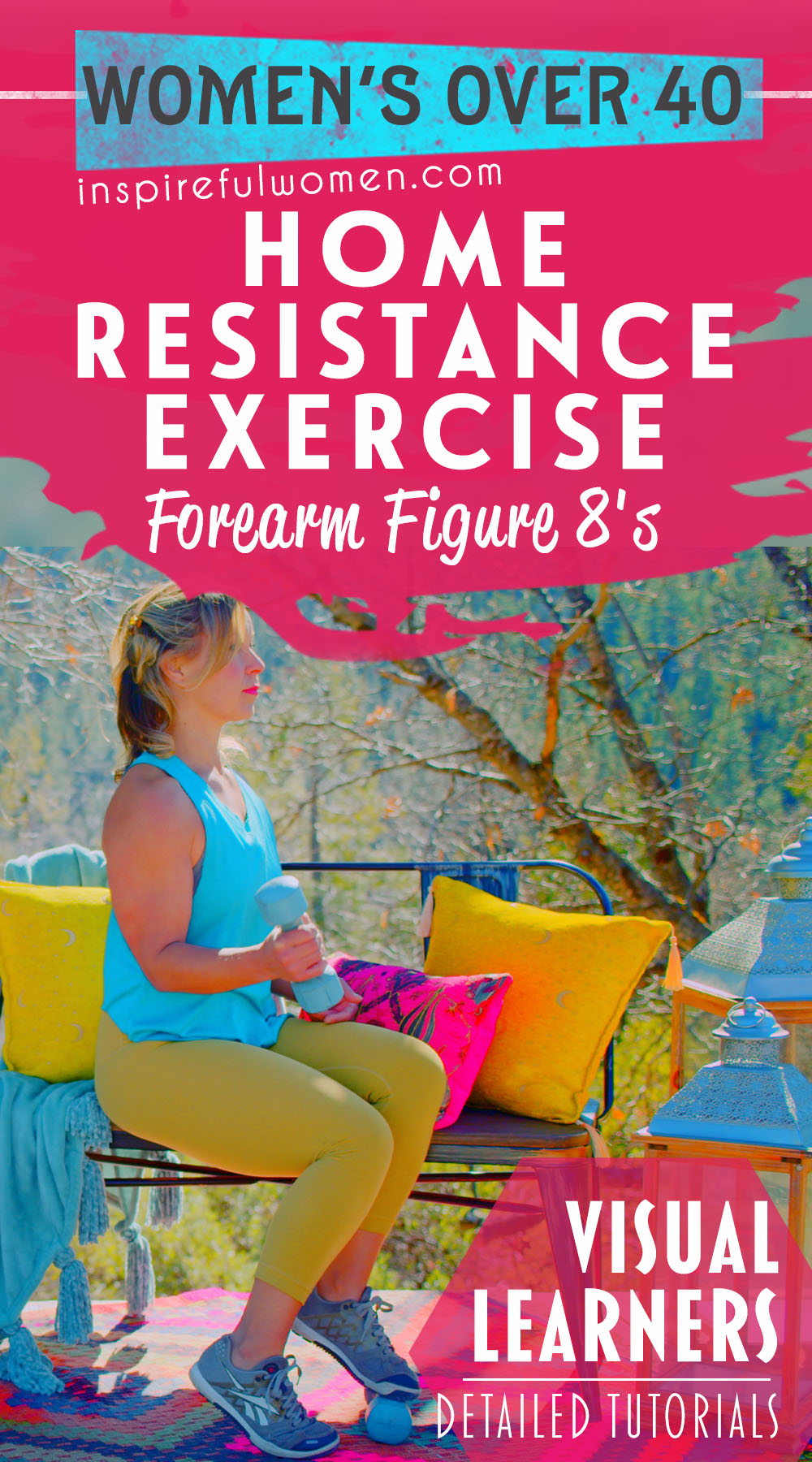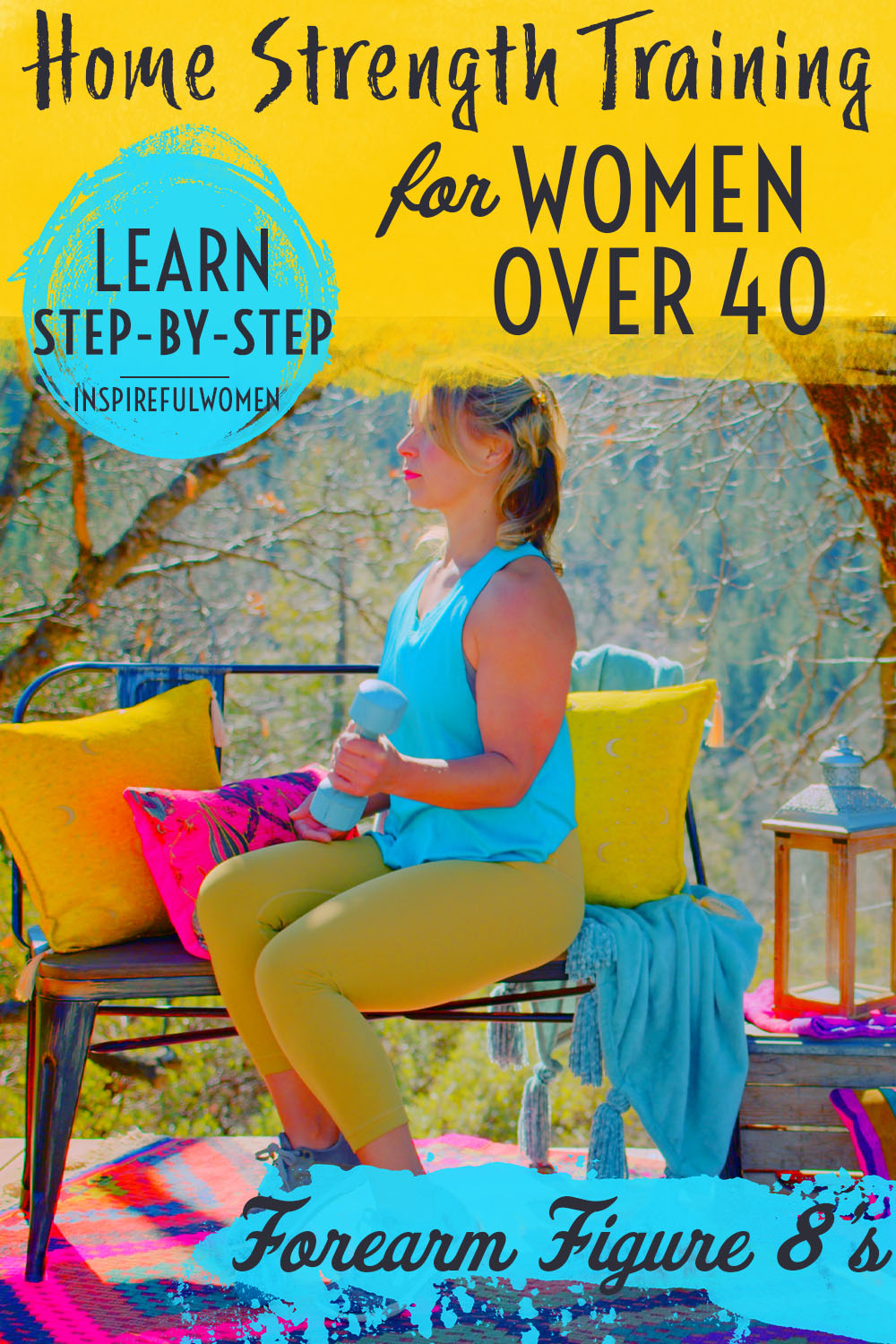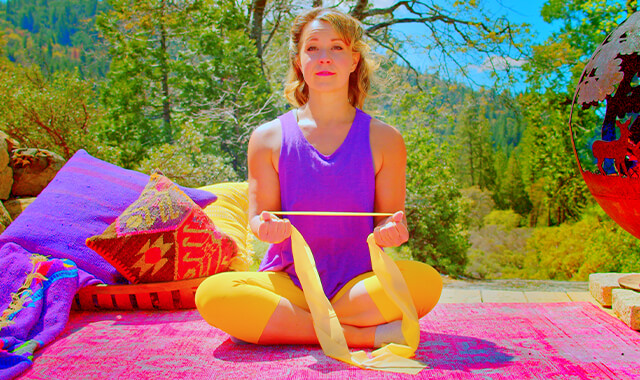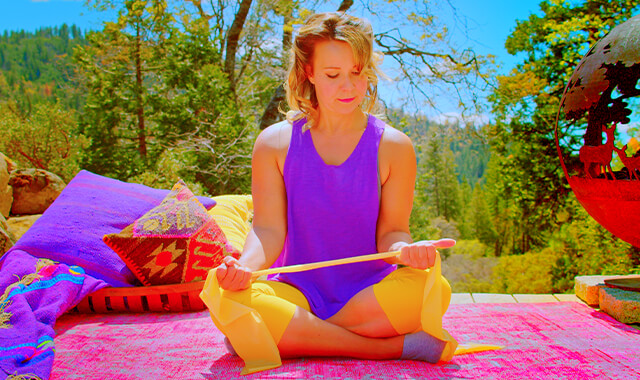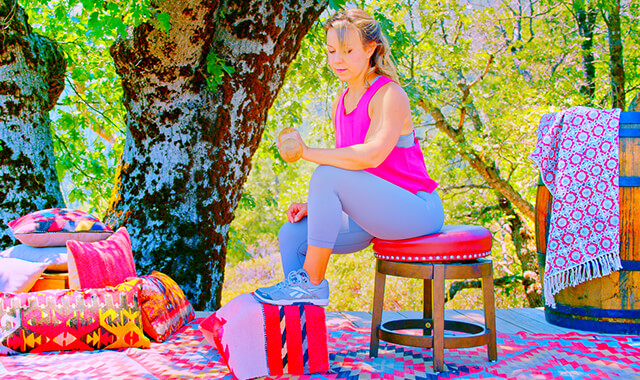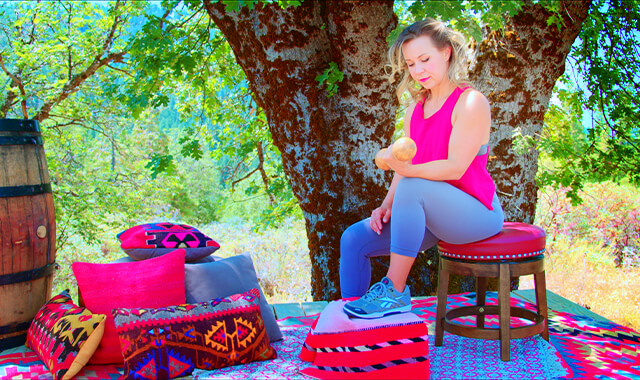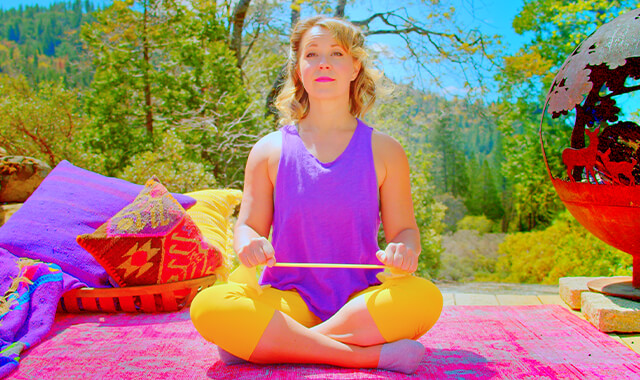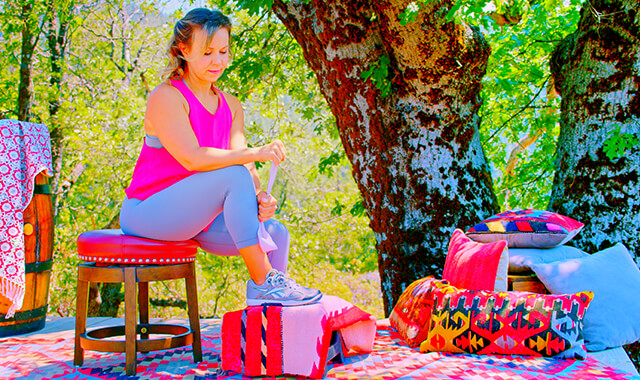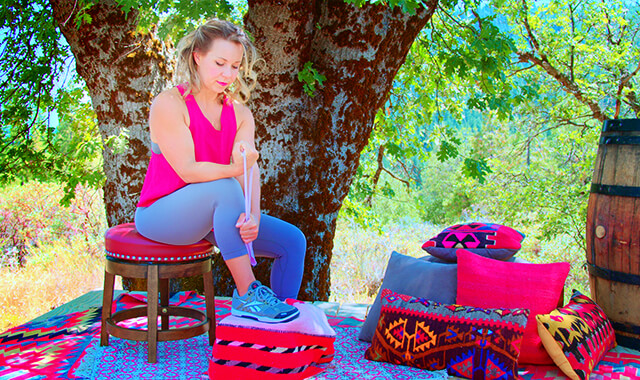Forearm Figure 8's
How to Do Forearm Figure 8's - Forearm Strengthening Exercise | In-Depth Guide [VISUAL LEARNERS] Beginner
Proper Form, Common Mistakes, & Variations | Home Resistance Training
WHAT DO YOU WANT TO SEE?
QUICK DEMO
QUICK DEMO
MUSCLES THIS WORKS
MUSCLES
MAIN MUSCLES WORKED IN the Forearm figure 8
FOREARM MUSCLES - SEE BELOW
Biceps brachii, supinator, pronator teres, pronator quadratus, flexor carpi radialis, flexor carpi ulnaris, extensor carpi radialis longus and brevis, and extensor carpi ulnaris.
OTHER MUSCLES WORKED:
- Anterior deltoid
- Scapular stabilizers
- Flexor digitorum profundus
- Superficialis
- Palmar interossei
- Flexor digiti minimi brevis
- Abductor pollicis longus
- Extensor pollicis longus
- Brevis
- Palmaris longus
WHAT WE'RE DOING TODAY
WHAT & WHY
BENEFITS OF TRAINING THE Forearm muscles
WHAT
WHAT WE'RE DOING TODAY
ALL WE'RE DOING:
Flipping our forearms up and down, trying to make a figure 8 shape with the dumbbell.
Forearm figure 8's with a dumbbell is an easy exercise to target and strengthen the muscles in your forearms. This exercise not only enhances grip strength but also helps develop coordination and flexibility in the wrist joint.
The main point here is to see your forearm go from hairy side up to soft side up a lot throughout this exercise.
In this exercise, the forearm is used to move the hand in a figure 8 shape. This movement takes the forearm through a continuous motion of the entire range of forearm rotation - from the palm down to the palm up. The focus is on good smooth control of the movement. This exercise can be used to warm up the forearm before arm exercises, it can be used in between sets, or it can be done at the end of a workout. This is also a nice exercise to do when sitting at your desk or driving - it will increase the blood flow to the muscles, and loosen up stiffness in the joints and tightness in the muscles.
WHY BOTHER DOING IT?
WHY
WHY DO WE EVEN CARE?
FIX THE LIMITING FACTOR IN MANY ACTIVITIES
If you think about it, our hands, wrists, forearms - they are really like, “the thing” when it comes to doing a lot of activities in life and one of our MAIN limiting factors to these activities as well.
The rest of our arms, core & legs could be bulging with muscles, but without healthy pain-free movement of our wrists, hands, and fingers - we’re going to have a hard go doing a lot of things.
Gardening, driving, hiking downhill with trekking poles, opening cans, and jars, chopping recipe ingredients, sewing, painting, dishes, putting on clothes - whether hobby or chore, whatever, all these things need pain-free movements of our hands and wrists and grip strength.
As we age our ability to use our hands decreases - not only do the muscles get weaker, but the joints of the wrist and fingers lose mobility and we lose motor control - our ability to use our hands for detailed movements. Grip strength at 45 years of age has been found to be a strong predictor for what we will be like physically 25 years later.
MAINTAIN WRIST/FOREARM HEALTH TO KEEP THE REST OF YOU ACTIVE
To me, this probably has something to do with the fact that if we maintain or improve our ability to continue using our hands & wrists for all the activities they are involved in as we age, we’ll keep using the rest of our bodies for the same activities as well obviously, which means - we’ll stay young & active much longer!
Think about it - if it hurts to put pressure on your wrist to support you when you hike downhill with trekking poles, or when you are gardening- the natural response for many of us is to do those things less & less & eventually to…stop entirely. Those are 2 very active things that involve our whole body moving that now is no longer a part of our life & we may not just be sitting instead. This lack of movement will cause us to age much faster.
So keeping these smaller parts of us capable (or improving them - it’s never too late! If you already have painful or restricted movement in your wrists & hands, these types of exercise can really improve that!) is what will keep the rest of our bodies capable as well as the years go by, since we’ll be continuing to engage in all these activities that utilize our whole body.
All that to say - these wrist & forearm exercises are a great way to increase the mobility, control & lubrication of these joints.
EVERYDAY LIFE
EVERYDAY LIFE &
MUSCLE FUNCTION
HOW WE USE OUR Forearm MUSCLES IN EVERYDAY LIFE
1. THE MUSCLES OF THE FOREARM WORK TOGETHER TO STABILIZE THE WRIST DURING ALL ACTIVITIES THAT INVOLVE USING THE ARM WHILE HOLDING THE WRIST STILL:
- Lifting
- Carrying
- Drinking - holding a glass
- Shoveling
- Raking
- Weeding
2. THE MUSCLES OF THE FOREARM WORK TOGETHER TO MOVE THE WRIST DURING ALL ACTIVITIES THAT INVOLVE USING THE HAND:
- Brushing teeth or hair
- Washing the dishes
- Using a computer
- Writing
- Buttoning a button
- Waving
- Picking small items up
- Eating
- Folding laundry
- Using a screwdriver
- Opening a jar
- Using a can opener
- Turning a door knob
STARTING POINTERS
Starting Pointers
The pronators (muscles that rotate the palm down) and supinators (muscles that rotate the palm up) will be working together with a combination of muscle contractions (concentric and eccentric contractions) to control the movement. Following the hand with the eyes helps to improve your control over the movement - and helps to strengthen the communication between the muscles and the brain. The wrist will move along with the forearm, but should not be the focus of the movement. The upper arm may also try to help out, that is ok, just try to focus on moving the forearm as much as possible.
HOW TO DO THE EXERCISE
LOOKS
HOW Forearm Figure 8's SHAPE OUR BODY
Toned forearms, creates balance between the size of the upper arm and forearm.
PROPER FORM
PROPER FORM: Forearm figure 8
EQUIPMENT, SETS & REPS
EQUIPMENT
Dumbbell, can, small weighted ball.
SUGGESTED STARTING WEIGHT FOR WOMEN:
1-3 lbs.
SETS & REPS:
1 set of 8 - 10 reps, reverse direction for the 2nd set of 8 -10 reps.
PACE:
Slow control.
BODY POSITION
BODY POSITION FOR THE Forearm figure 8
BODY STANCE: Standing with a neutral spine, knees slightly bent. Shoulder blades back and down, sternum lifted.
ARMS: Down by your sides. Working arm: Elbow bent with forearm parallel to the floor.
HAND: Palm down (pronated) grip on the dumbbell.
HOW TO DO
HOW TO DO Forearm figure 8's
CUE: Try to move very smoothly and will control. The 8 you will be drawing is actually a sideways 8 - more like an infinity ∞.
You will be leading the movement with your thumb. Rotate your forearm to dip your hand down to start drawing the circle on one side of the eight. Try to keep your forearm parallel to the ground the entire time.
Begin to rotate your forearm in the other direction as you come around the end of the eight, rotating your palm up.
After completing 8 - 10 reps, reverse the direction so you are leading with your little finger.
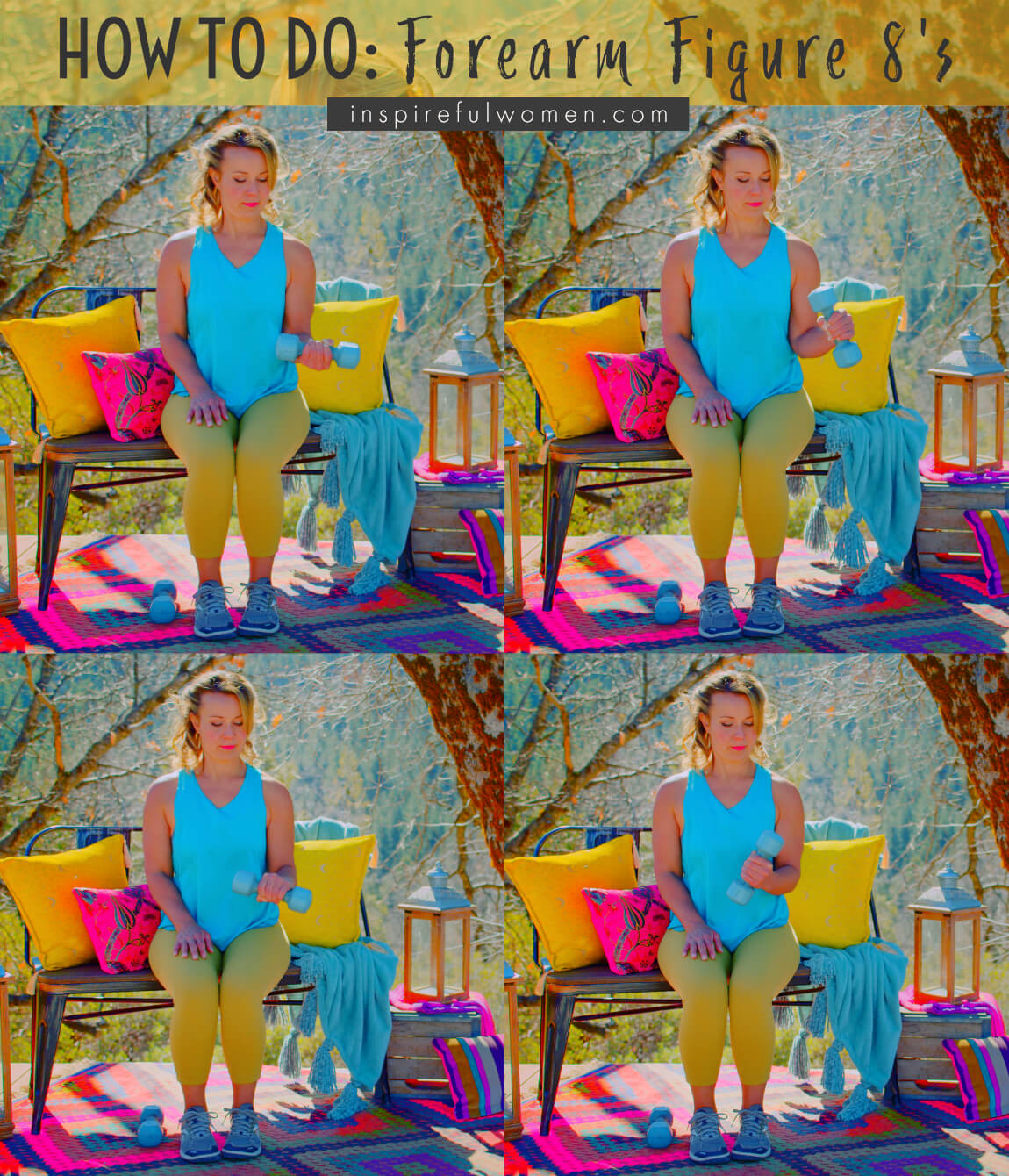
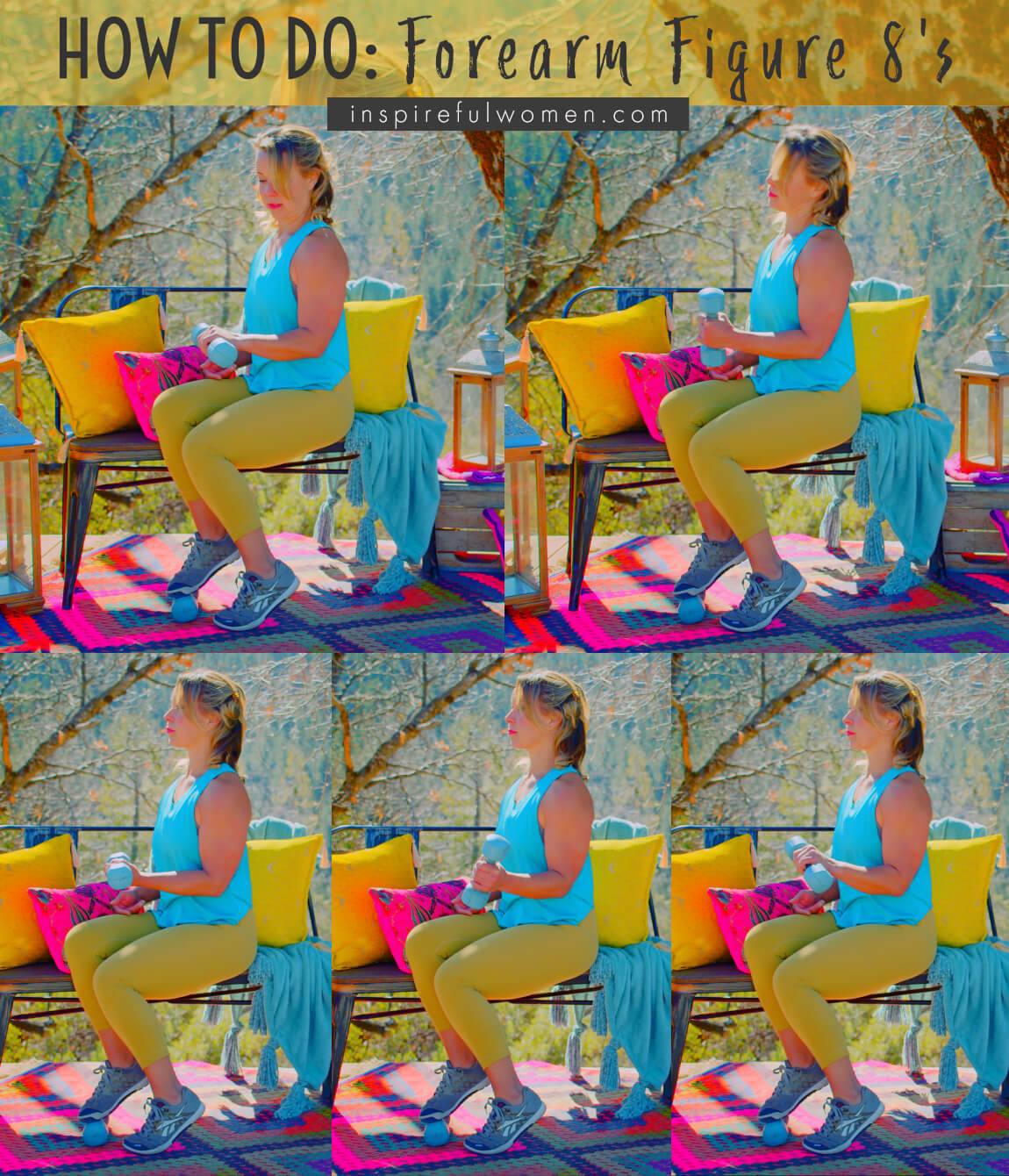
COMMON MISTAKES
COMMON MISTAKES
WHAT TO AVOID WITH THE Forearm figure 8
KEY TIP:
Guess what? Good news! Many avoids are the same for most movements. Once you learn the basics, there's really only a few extra avoids for each individual movement.
1. Avoid Moving From Shoulder Joint
AVOID: Moving the shoulder
WHY NOT?
- The purpose of these exercises are to work the forearm and wrist.
WHAT TO DO:
- It is fairly common for the shoulder joint (which is much more mobile) to want to help out.
- Try to keep the movement isolated to the target area, some movement of the upper arm is pretty common when you are doing figure 8s with the forearm,
- Concentrate on trying to get the movement from the forearm but understand that the upper arm will move a little bit.
2. Avoid Clipping Circles
AVOID: Clipping the circles.
WHY NOT?
- It is common to clip the ends off and make the shape more square.
WHAT TO DO:
- Really focus on nice round 8s.
3. Avoid Moving Too Quickly
AVOID: Moving too quickly
WHAT TO DO:
- The focus should be on control over the precise movement of drawing an 8 with nice round ends.
- To maximize the benefits of the exercise, make slow controlled movements.
4. Avoid Tight Face and Neck
AVOID: Tightening the face or neck
WHY NOT?
- For some people, it is common to tighten their face or neck muscles when they are concentrating on making controlled movements with their hands.
- Tightening the face and neck is unnecessary muscle tightness and will not help the exercise that you are doing.
WHAT TO DO:
- Check-in with your neck and face and make sure that those muscles are relaxed.
5. Avoid Too Much Weight
AVOID: Using too much weight
WHY NOT?
- The muscles of the forearm are smaller muscles.
- The goal of the exercise is to wake the muscles up, and improve the health of the muscle to prevent injury.
WHAT TO DO:
- You may want to do this exercise without weights.
- The benefits include, moving the joints, working on control, increasing blood flow.
VARIATIONS
VARIATIONS
VARIATIONS OF Forearm figure 8's
STRAIGHT ARM
Straight Arm Forearm Figure 8
This exercise can be done keeping the elbow straight, or near straight (soft bend in elbow). This will increase the activity of the biceps brachii and anterior deltoid to hold the arm up. This can also make it more challenging to try to isolate the movement to the forearm or wrist - the shoulder will try to help more.
SCIENCY STUFF
ALLLL MUSCLES & WHEN
ALL MUSCLES WORKING & WHEN DURING THE Forearm figure 8
The muscles of the hand work to hold the dumbbell: flexor digitorum profundus and superficialis, palmar interossei, and flexor digiti minimi brevis.
The pronator teres and quadratus work (concentrically or eccentrically - depends on how energetically you start the movement and how much weight you are using) to move the forearm down to the bottom of the first circle, the supinator and biceps brachii work concentrically to pull the weight around the end of the eight and push it down to the bottom of the other side of the eight.
At the top (the furthest end) of the next circle, the pronator teres and quadratus will work concentrically to pull the forearm around and complete the eight.
PIN IT FOR LATER!
